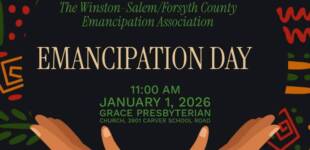A&T Students Taking Part in Out of This World Experiment
NASA has selected a team of students from North Carolina Agricultural and Technical State University and Purdue University to design and build an experiment to be operated on the International Space Station.
The universities were chosen by NASA to create an original experiment in “capillary fluid dynamics” through the space agency’s National Lab Education Projects for the International Space Station.
Primarily, undergraduate engineering students at both universities, will design and build the shoebox-size experiment, develop the procedures for operation in space, train the astronauts, process the data, and write research papers describing the results.
The experiment is part of overall work to provide data that could help in the design of systems that require the precise control of fluids and gases, such as life-support equipment and fuel tanks for spacecraft. Findings also could apply to technologies for use on Earth such as fuel cells, medical instruments and miniature diagnostic devices.
“The collaboration will expose our students, the next generation of explorers, to microgravity science and technology,” said Dr. John Kizito, professor of mechanical engineering at N.C. A&T. Kizito and Dr. Steven Collicott, professor of aeronautics and astronautics at Purdue, are leading the project.
“This project will give students unique and in-depth, real-world, team-based, original, design-build-test educational experiences that will accelerate their learning and their careers,” Collicott said. “We anticipate the experiment becoming operational in orbit in 2014 or 2015.”
About 20 Purdue undergraduate students will be involved in the project each semester over approximately three years. About 10 A&T students will be directly involved with the project each semester. Another 20 will interact with the project as part of their course work in fluid mechanics.
Before coming to N.C. A&T, Kizito worked for eight years at the NASA Glenn Research Center in Cleveland. He conducted research on microgravity environments. The project includes efforts to motivate middle school students to pursue and enjoy topics in science, technology, engineering and math, or the STEM disciplines.
“We envision the development and distribution of curriculum that teaches basic STEM concepts based on the topic of the experiment,” Collicott said. “A great thing about the experiment topic is that we can design desktop demonstrations that middle school teachers and students everywhere can replicate and learn from in a hands-on manner.”












